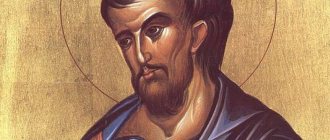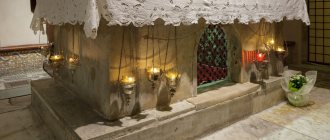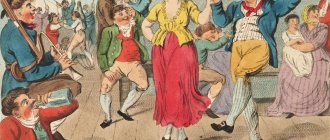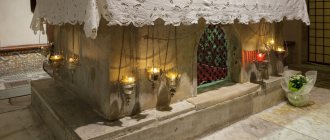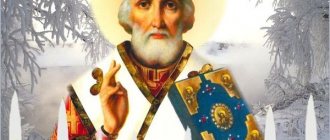55 years ago, the case of the theft of Frans Hals’ painting “Saint Luke” from the Pushkin Museum was solved. The criminal was punished, the painting was returned to the state. However, much in this story remains unclear to this day.
“Museums are not robbed in the USSR”
Newly-minted “historians” of Soviet cinema often hear that the film “The Return of St. Luke” was filmed specifically to divert the attention of Soviet citizens from the true circumstances of the case. Gentlemen, the researchers, apparently, did not live in the times of the USSR, otherwise they would have known that the state did not require any distracting maneuvers for the simple reason that no one knew about this theft except those involved in the investigation and the museum staff. Well, there was no crime chronicle in the Soviet Union in its current version.
Ekaterina Furtseva
There was a reason, so to speak, of a reputational nature. Shortly before the theft, Minister of Culture Ekaterina Furtseva was on a business visit to France. Having heard that over the past five years (this was in 1965) almost one and a half hundred paintings by old masters were stolen from French museums and private collections, Ekaterina Alekseevna exclaimed: “Museums are not robbed in the Soviet Union!” And she was absolutely right: this business is unprofitable and dangerous! For encroaching on state values on a particularly large scale, one could easily receive capital punishment. And it was by and large impossible to sell the masterpiece. It is not surprising that the previous robbery of the museum, the same Pushkin Museum, occurred in 1927. The then stolen paintings by Titian, Rembrandt and Carlo Dolci were found only in 1931, but since then the museum workers have slept peacefully.
There was no sadness, so give it to me! Eh, Ekaterina Alekseevna didn’t know how such statements end! The director of the Louvre at one time also publicly declared that it was impossible to rob his museum, and soon Vincenzo Perugia stole La Gioconda. Ironically, the thief of “St. Luke” also turned out to be a carpenter...
The mysterious Monsieur van Berg
On March 9, 1965, the Pushkin Museum was closed to visitors - a sanitary day, but employees not associated with the exhibition worked as usual. And then, in broad daylight, someone enters the hall where the Khalsa painting hangs, cuts it out of the frame and disappears. The empty frame, left hanging in its place, just like in the film, was noticed only the next day. No traces were found at the crime scene, but it was clear that the work was done by an amateur. A professional would separate the subframe from the frame and remove the canvas intact. And here the picture was roughly cut out not even along the edge of the frame, but at a distance of about 5 cm from it, and even with a dull knife, judging by the marks, a penknife.
At that time, there was no special department specializing in the theft of works of art at the Moscow Criminal Investigation Department. The investigation was assigned to Lieutenant Colonel Sergei Derkovsky, who headed the department investigating the theft of state property. The prosecutor's office took special control of the case. The main version of the investigation is that the painting was stolen on the order of some Hals-obsessed collector, most likely foreign. There was no doubt that this was an order: much more valuable paintings hung in the same room.
A survey of the hall keepers led the investigation to a certain foreign tourist who went to the museum for several days in a row and stood for hours in front of some of the paintings, making some notes in a notebook. He turned out to be Belgian citizen Jacques van der Berg, an art critic who had repeatedly visited the Soviet Union and was seen trying to establish contacts with underground antiques dealers. A so-called swallow is sent to the enterprising Dutchman: a beautiful girl introduces herself as the daughter of an underground collector, hints that she wants to sell the painting, and when Monsieur Jacques takes the bait, she shows off a masterful copy of Rembrandt. Van der Berg asks for a day to think about it, but, apparently suspecting something was wrong, goes to Sheremetyevo in the morning and checks in for the next flight to Brussels. The plane is detained, the frightened Dutchman is given not only a search, but also a personal search, but nothing is found, and the would-be smuggler leaves for home.
The same " Saint Luke "
The torments of a half-educated carpenter
For several months the investigation has made no progress. And so in August, on what was then Kalininsky Prospekt, near the Melodiya store, where one could buy a coveted imported record from a visiting foreigner, a young man approached a well-dressed gentleman and offered to buy a Rembrandt-quality canvas for 100 thousand rubles. The gentleman answered in broken Russian with a strong German accent that he himself was not a collector, but would help find a buyer. The “German” turned out to be a KGB officer. Accident? More like a pattern: in those days, more employees of the “office” were hanging out on Kalininsky and Gorky Street than real foreign guests.
A true professional, this man calculated the situation instantly - the amount requested by the stranger was too large. The guy was put under surveillance. He went straight from Kalininsky to the Pushkin Museum and entered through the service entrance. The identity was easily established: he turned out to be 27-year-old cabinetmaker Valery Volkov.
He got a job at the museum on the recommendation of the chief curator, whom he met by chance after giving up his seat on a tram to an elderly man. He introduced himself as a graduate of the Surikov Institute, charmed him and got the job. Temporary, because “due to absentmindedness” I still couldn’t bring my diploma to the HR department. And, although museum personnel officers had already begun to threaten him with dismissal, the description kept in his personal file stated in black and white: “During his work at the museum, he was always disciplined and efficient. He is interested in the past and present of fine art and literature. As a rule, he knows how to meaningfully fill his leisure time with reading, visiting exhibitions, etc.”
Valery Volkov
The “mediator” from Kalininsky arrived at the meeting at the Moscow pool in a Mercedes of the latest brand with German license plates. The role of the “buyer” was played by a foreign intelligence officer, who appeared in the case as Leonid Krasnov. The tight-fisted “foreigner” started bargaining and brought the price down to 60 thousand. We all drove together to Ostozhenka, then Metrostroevskaya. The “intermediary” remained in the car, the “buyer” and the “seller” went to get the goods. Volkov meandered through the courtyards for a long time, the outdoor surveillance lost sight of them for more than half an hour. Finally both appeared. Volkov was carrying in his hands a large doll box, beautifully tied with a ribbon. There was a Khalsa painting inside. The fact that this is an original was evidenced by the red Hermitage inventory number “1850” in the lower right corner of the painting.
During the investigation, Volkov first stated that he had found the painting in the boiler room of the museum, but when the name of his girlfriend came up during interrogation, he admitted: he stole Khalsa for a certain collector, who promised him in return an authentic diploma from the Surikov Institute, which the museum increasingly demanded from him. Volkov, who dreamed of becoming an artist, was not accepted into the institute because of his criminal record: in 1957, he received three years for theft, and with a diploma in carpentry and furniture making from a vocational school, there was nothing to do in such a high-status museum.
Volkov named Valery Alekseev as the customer. The half-educated philologist worked as a mechanic (!) at a consumer services plant, and among black marketeers and underground collectors he was known under the nickname Art Critic. And here a curtain of fog falls over the seemingly clear course of the investigation. If this is so, then the Art Critic could not have known how to handle works of art, and had to explain this to his accomplice. And even he, having worked for almost two years in the museum, should have had some knowledge. But Volkov barbarously cuts out the canvas, rolls it up with a layer of paint inside, which cannot be done under any circumstances, and keeps it behind the stove (in any case, it was from there that he took out the package with the painting to show it to the “buyer”). As a result, the condition of the painting was appalling. In their right mind, no collector would buy it, because in underground conditions it is almost impossible to restore such a thing.
There is no answer to the main question: who was the real mastermind of the crime? Alekseev was not yet a collector at that time and could not have such funds at his disposal. But he was quite suitable for the role of intermediary. Whose order was he carrying out? Perhaps Monsieur van der Berg? And he, scared to death by the search at the airport, never dared to return to the USSR for his “order”?
At the trial, Alekseev denied his participation in organizing the theft and called the charges against him “a provocation against Soviet art collectors.” It is known that in connection with this case he was twice subjected to a forensic psychiatric examination at the Serbsky Institute and was found not responsible for his actions. For what reasons is unclear; the case materials are not fully open. The conclusion suggests itself that behind Alekseev there could be a figure of greater magnitude than the Dutch art critic. But she never came out of the shadows...
Volkov, according to him, when the museum threatened him with dismissal due to lack of a diploma, took the painting from Alekseev, which had not been sold for five months, in order to find a buyer himself. The investigation believed that it was Alekseev who conceived and organized the theft (the half-educated carpenter simply would not have had the intelligence for this), but they were never able to collect solid evidence. All the blame fell on Volkov. He received 10 years in prison. And the canvas went to one of the best restorers of the Soviet Union, Stepan Churakov. It took the master two and a half years to bring him back to life. After restoration, the painting returned to Odessa.
The curse that never happened
The difficult fate of the Khalsa evangelists and the artist himself is often explained by the curse that was placed on him. He really ended his days in an almshouse, forgotten by everyone. Legend has it that this was the work of Barbara Klaas, nicknamed Malle Babbe, the owner of one of the Haarlem taverns, where France was a regular. In Haarlem, this woman was considered a witch, and unfortunately for Hals, she did not like the portrait the artist painted of her. She allegedly demanded that he be destroyed, the author did not agree, and from that moment his career went downhill. Everything would be fine, but the painting - abroad it is considered the most recognizable work of the master - was painted in 1635, when Hals was still more than successful.
According to another version, this is how his illegitimate daughter took revenge on Khals. The artist, who truly had an enviable temperament, did not neglect casual connections. He probably saw no sin in seducing his own maid, and given the grumpy disposition of his second wife, he could well have put the mother of his unborn child on the street - he had twelve legal souls. The unfortunate woman died in poverty, and 20 years later her daughter met her father on the street, and he refused to recognize her. Since then, Hals allegedly has not created a single great painting.
Impressive, but even here the ends do not meet. The so-called decline of the Khalsa began somewhere in mid. 1650s, when the artist was over 70. Of course, he could conceive a child at 50, especially since his last legitimate child was born around this time. But, you must admit, even today at such a respectable age it is difficult not to leave the canvas for days, serving numerous customers. And with reasonable reflection, we will come to the conclusion that everything in Hals’s fate is not bad at all: for most of his life he remained in demand and wealthy, and after his death he became one of the three greatest painters of the Dutch Golden Age, taking a place next to Rembrandt and Vermeer. And his long-suffering evangelists live well to everyone’s joy...
Veneration of the Apostle Luke
Luke was born in Antischia and was a very educated man. In his youth he studied Greek philosophy, medicine and painting. During the life of Jesus Christ, Luke met him face to face, listened to his sermons, after which he was impressed and strongly believed in them. After a while, the man was included among the seventy apostles. He was close to Christ at the moment of his death and sincerely mourned on Calvary.
On the day of his resurrection, Christ consoled the preacher and appeared before him and his other companions. After this, the disciple of Christ was sent to preach from Jerusalem to Emmaus.
After the condescension of the Holy Spirit to the Apostles, Luke returned home to Antioch and began to work with the Apostle Paul, with whom he traveled to Rome. Together with Paul, the man traveled to different countries in 49-52 and 53-58.
Luke is the author of one of the Gospels, which is why evangelists often depict him on their icons. He painted the first lifetime image of the Mother of God, and thus laid the foundation for the tradition of icon painting. The following icons came from the hand of the master: Vladimir, Iveron, Tikhvin, Czestochowa, Edessa, as well as many other shrines that were blessed by St. Mary herself.
After Paul died, Luke continued his work, preaching the Gospel in Italy and Macedonia. The preacher painted three icons of the Mother of God and the faces of Saints Peter and Paul, which is why he is considered the founder of Christian iconography.
The best article for you, go to: Icons of St. John the Baptist meaning and what they help with
In old age, the righteous man continued to travel and preach in Libya, Upper Egypt and Greece. At 84, he wrote the Acts of the Apostles when he was hanged from an olive tree in Thebes. Therefore, the images of the Evangelist Luke may include this plot or signs of martyrdom. During the reign of Emperor Constantine, the relics of the apostle were transported to Constantinople.
Apostle and Evangelist Luke, how does he help?
Prayers addressed to the face of the Apostle Luke help in spiritual enlightenment, eliminate doubts and misconceptions, and help to comprehend the meaning of life. Also, reading a prayer to the Apostle Evangelist Luke will help heal physical and mental illnesses, strengthen family ties, protect against mistakes and allow you to sincerely repent of your sins.
The ascetic is the patron saint of doctors, editors, journalists, painters and farmers. So, having an icon of the Saint at home, you can always ask him for help in difficult times.

